Wormwood herb
The wormwood herb is a whole group of plants that are found throughout the Northern Hemisphere. They are found in wastelands, meadows, in the steppe, and often litter vegetable gardens. Many species are useful for humans, used in medicine, cosmetology, and cooking. There are varieties that are grown in flower beds.
- Types of wormwood
- Description of the plant
- Chemical composition
- Healing properties
- Healthy recipes
- Infusions for the stomach
- Remedies for worms
- Ambrosia drink
- Soothing decoctions
- Remedies for bruises and neuralgia
- Remedies for alcoholism
- Recipes for female diseases
- Hair care
- Other uses of wormwood
- Wormwood in agriculture
- Conclusion
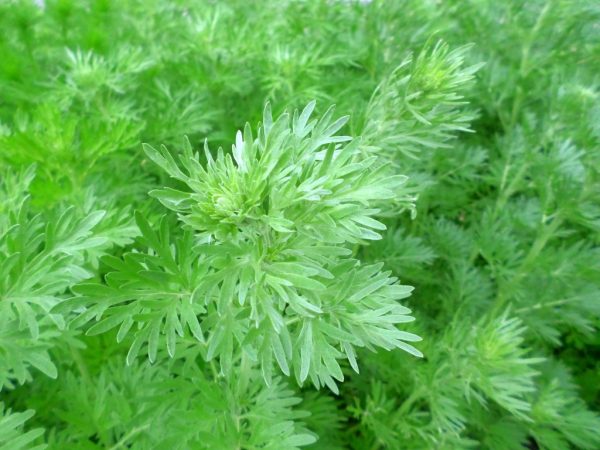
Wormwood herb
Types of wormwood
The plant belongs to the order astrocytes, the family of Asteraceae (Compositae), the genus Wormwood. The Latin name - Artemisia (artemisia) - was given in honor of the ancient Greek goddess Artemis, whose symbol was this herb. Different peoples give wormwood and other names. For example, the Turkic name is evshan or chernobyl (bitter star).
The genus includes more than 400 species, 170 of them grow on the territory of Russia and in neighboring countries of Asia and Europe. There are widespread and rare varieties. Some of them are cultivated as decorative or medicinal, for the production of medicines. The plant blooms, has original leaves, therefore it is becoming more and more popular with landscape designers. Wormwood was often planted in city flower beds and in flower beds near houses.
Species are conventionally divided into tall and undersized. Tall ones reach 1-2 m, have a bushy stem, grow on the plains, in the steppes. Low-growing ones do not grow more than 20-40 cm, they are common in mountainous areas with poor soil.
Known tall varieties:
- ordinary;
- bitter;
- gmelin;
- Louisiana;
- milky-flowered;
- annual;
- rut-leaved;
- lemon;
- tarragon (tarragon);
- spreading;
- Dzungarian;
- citric;
- medicinal (fragrant).
Popular undersized species:
- Schmidt;
- Steller;
- field;
- shiny;
- cold (stone);
- white earth;
- few-flowered (black);
- tavricheskaya;
- Austrian;
- Caucasian;
- broadleaf;
- dwarf.
Wormwood, whose range is the entire Northern Hemisphere, also captures South Africa. The distribution is wide, it is found everywhere. Loves open areas. Kazakhstan and the south of Ukraine are known for whole thickets. Plants are unpretentious, they grow even on the most scanty soil or rocky ground. They inhabit wastelands, rocks and mountains.
Lemon wormwood grows in the hills in Central Asia. Described this plant in the 20s of the last century. Now the grass with a lemon scent is grown in flower beds.
Not only lemon wormwood is endemic. Gmelin grows in the Far East, it is not found anywhere else. Tauride is found only in the Crimea and in the steppes of the southern regions of Ukraine.
Description of the plant
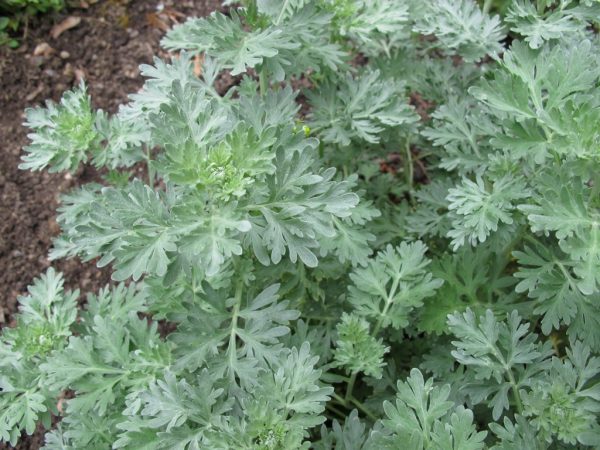
All varieties of wormwood are similar to each other
Wormwood looks like a small bush with small dissected leaves and nondescript flowers. Different species differ from each other, but the genus has a number of common features and a similar structure:
- The stem is thick, hard, straight, sometimes looks like a tree.
- The leaves are separate, clawed or pinnate, in most species they are dissected with small lobules, but they are whole or whole-edged.
- The lower leaves are larger than the upper ones, sessile.
- All green parts of the plant are covered with silvery villi, so wormwood is gray.
- The roots are thick.
- Wormwood flowers are inconspicuous, small, white or yellow, less often reddish.
- Inflorescences are small heads or baskets with an ovoid, spherical or cupped shape, up to 1 cm in size, wrapped in thin tiled sepals. Along the edges are unisexual pistil flowers (in the subgenus Draclinculus - staminate), in the center - bisexual. They are tubular and small in diameter.
- Inflorescences of the first order are collected in brushes, panicles, spikelets.
- Pollen during the flowering period is carried by the wind; insects do not participate in pollination.
- The fruit is a smooth seed. One bush is capable of producing more than 100,000 fruits per season, the seeds of any wormwood are spread by the wind, it sows large areas with its seedlings.
Most species are biennial or perennial plants, less often annuals. In the first year, two-year-old grass grows green pagons from the root. The flowering of such wormwood begins in the next season, peduncles appear. Most often, this period in the temperate zone falls at the end of summer and beginning of autumn. Annual and perennial varieties have flowers annually.
This herbaceous shrub has a pungent and specific smell, the juice contains bitterness. Mice and insects are afraid of its flowering, many herbivores do not eat this plant. There is a sign: if you find the first wormwood in the spring and pluck it with your own hands, all the troubles will go away.
Chemical composition
The chemical composition of the plant is rich, it is a real storehouse of useful elements. The leaves contain substances that give the plant bitterness. Most of them are in bitter wormwood. It contains biologically active components that have different effects on the body:
- flavonoids;
- thujone;
- pinen;
- kadinen;
- bisabolol;
- hamazulengon;
- selenene;
- capillin;
- Apple acid;
- succinic acid;
- alkaloids;
- saponins;
- terpenoids;
- galenic compounds.
The plant is rich in phytoncides, famous for their bactericidal effects, contains ascorbic acid, carotene and vitamin A. Due to such a rich composition, wormwood has been used for many centuries for medicinal purposes.
Healing properties
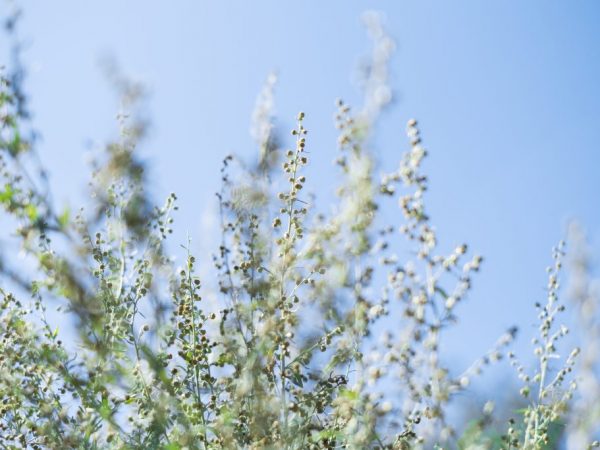
The herb has a beneficial effect on the entire body
Most often, wormwood is used for medicinal purposes. Several other species also have medicinal properties. The use of extracts, tinctures and decoctions increases appetite and treats stomach ailments. Bitter substances irritate the papillae on the tongue, which stimulates the secretion of pancreatic enzymes, bile, gastric juice and increases acidity. Digestion improves, and the whole body starts to work better.
Alkaloids and some other substances have a beneficial effect on the work of the heart. Hamazulen activates immune cells - phagocytes and lymphocytes. The plant has antimicrobial and anti-inflammatory effect, improves the state of immunity. The combination of chemical compounds contained in the herb is capable of destroying parasites, therefore it is used as an antihelminthic agent.
Indications for the use of wormwood:
- hypoacid gastritis and ulcers against a background of low acidity;
- dyspepsia;
- dyskinesia of the biliary tract;
- constipation;
- flatulence (bloating);
- dysentery and other intestinal infections;
- liver disease;
- ulcerative colitis;
- hemorrhoids;
- colds, flu, SARS;
- bronchial asthma;
- rheumatic diseases;
- eczema of the skin;
- burns of various etiologies;
- hypertension;
- migraine;
- neurasthenia;
- wounds and bruises;
- sprain.
Chinese medicine uses wormwood as an aphrodisiac. In Europe, it was added to many medicinal tinctures. Even 200-300 years ago, wormwood therapy was considered a panacea. Bitter wormwood extract was one of the most valuable medicines. Tarragon and bitter wormwood are widely used by homeopathy.
The sorcerers believed that a great vital energy is hidden in the wormwood. Even now, fumigation or spraying of houses and apartments is used to change its energy in a positive direction. This herb is a good protection and a talisman against damage and the evil eye.
Wormwood herb is contraindicated in some people. It should not be drunk during pregnancy and breastfeeding. Many components in large doses are toxic, you should not abuse tinctures, they are drunk only in the quantities indicated in the recipe. When mixed with large doses of alcohol, the plant causes side effects - hallucinations, convulsions.
Healthy recipes
Drops, alcohol tinctures, dry preparations based on wormwood are sold in pharmacies. There are many traditional medical recipes that are used to treat various diseases. Wormwood is popularly considered an excellent remedy for stomach diseases. This is a female herb, therefore it is advised to drink it for gynecological diseases. It thickens blood, relieves pain, reduces fever, helps get rid of acne and genital warts and even impotence in men.
Wormwood recipes are simple, easy to prepare at home. In addition to classic decoctions and infusions, ointments, compresses, alcoholic tinctures are made from this herb. For the preparation of funds, blooming wormwood, leaves, seeds, roots are used. So that the medicines do not cause harm, it is worth following the instructions for use.
Infusions for the stomach
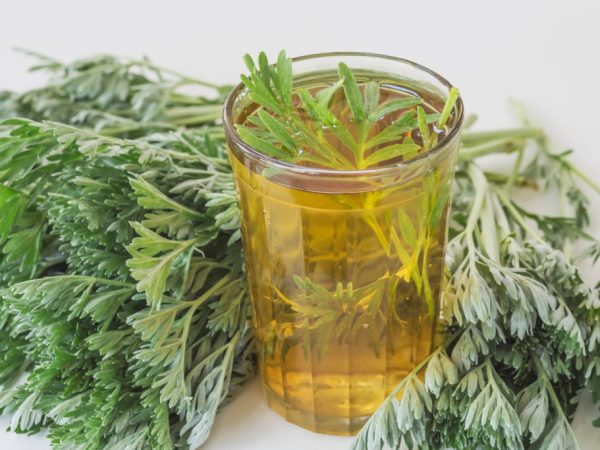
Wormwood infusion increases appetite
Take 2 tbsp. l. dried or fresh wormwood, pour 2 cups of boiling water and put in a water bath for a quarter of an hour. After that, remove, cover with a lid and insist for another 45 minutes. Filter, drink three times a day for 1-2 tbsp. l. half an hour before meals. It is recommended to store the product no longer than 2 days. It is taken with soda. Sometimes a decoction is advised for children to increase their appetite. But wormwood can be dangerous, therefore it is better not to use it until the age of 12.
With gastritis and low acidity tsp. herbs are poured with a glass of boiling water, insisted for 20 minutes. They drink half a glass in 30 minutes. before meals. The remedy helps with stomach pains. Take it an hour and a half before meals. Dill seeds, St. John's wort, calamus root, flax, peppermint added to the broth can enhance the effect. With constipation, senna is included in the collection, which enhances peristalsis and dilutes the stool.
Remedies for worms
To combat helminths, wormwood powder is used. It helps to get rid of lamblia, pinworms, roundworms. To prepare it, the grass is dried and ground by hand or in a coffee grinder. Then the powder is poured with a small amount of boiling water, wait until it cools down, and drink with the grass. Use the remedy for 2 weeks. Instead of powder, a pharmacy tincture is suitable.
When infected with pinworms, wormwood-garlic enemas are made. Take 200 ml of boiling water, squeeze out cloves from one head of garlic there, simmer in a steam bath for 20 minutes. The cooled garlic water is mixed with 2 glasses of wormwood broth. Enemas are done 3-4 days in a row.
With ascariasis, enemas are made from a decoction. Take 1 tbsp. l. raw materials per 1 liter of water, brought to a boil and infused for 10 minutes. A cleansing enema is done in the morning, and at night, 50-100 ml of liquid is injected into the rectum and left to be absorbed.
Ambrosia drink
Drink Ambrosia quenches thirst well in summer, increases acidity and serves as the prevention of intestinal infections. It is recommended to cook it on trains, on vacation. Take 1 tsp. bitter herbs and pour a glass of boiling water. Wait until the mixture cools down, gently filter. Add honey and cranberry juice there (25 g each or a full tbsp. L.). Dilute with boiled water (1 l).
It is convenient to treat wormwood diarrhea. A simple infusion is prepared: 200 ml of boiling water is poured over a tablespoon of herbs. In 10 minutes. drink 100 ml of still hot infusion. When it cools down, they finish drinking it completely. The action becomes noticeable after a couple of hours.
Soothing decoctions
Bitter herb is used to treat insomnia, neurosis, hysteria, relieve the effects of stress with it. Add 1 tbsp to a glass of boiling water. l. herbs, boiled over low heat for 5 minutes. The broth cools down for an hour, after which vinegar is added (2-3 drops). Moisten gauze or a towel with broth, put it on the forehead before going to bed, keep it for 20-30 minutes.
To calm the nerves, take the wormwood root, grind it into powder, pour in half a teaspoon. into a glass and pour cold boiled water. Insist 2-3 hours, filter. Drink 2-3 sips up to 5-6 times a day. For therapy to help, the remedy is used for 2-3 weeks.
Remedies for bruises and neuralgia
The herb has analgesic and anti-inflammatory properties. Ointments, rubbing are prepared from it, which help relieve pain with bruises, neuritis, neuralgia. They are recommended to be used for arthritis, radiculitis, rheumatism. The easiest way is to prepare a regular decoction, moisten a towel in it and apply it to the sore spot.
Fresh bitter wormwood is taken for grinding. It is put in a 0.5 liter jar, filled to the top, but not rammed. Then olive oil is poured into it, closed with a lid. Insist the medicine for 2 weeks in a dark cool place. The rubbing is filtered and stored in the refrigerator. The analgesic effect is enhanced if thistle is added to the rub, 2-3 tbsp. l. fresh or 1 tbsp. l. dry leaves, apply parallel heating. Grinding works if you put cabbage leaves on top and keep for 1-2 hours in the form of a compress.
The ointment is prepared on the basis of lard. Take 100 g of fresh grass, chop finely, pour 0.5 liters of melted fat. Put in a water bath and boil for 2 hours. Filter the hot product, allow it to cool and put it in the refrigerator.
Remedies for alcoholism
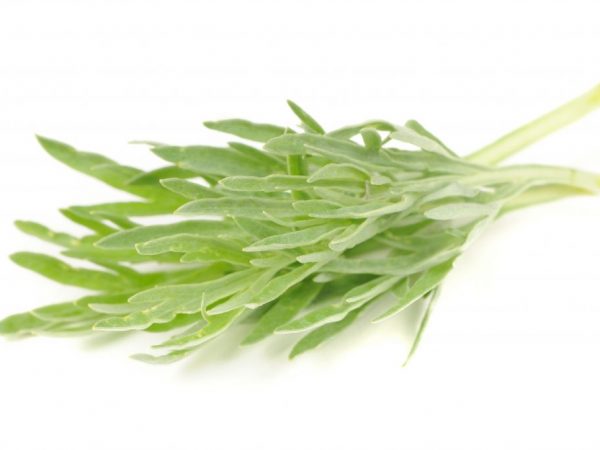
The herb helps to cope with a hangover
To relieve a hangover and help a person fight against alcoholism, use the following recipe:
- dried wormwood leaves - 4 g;
- dried thyme - 16 g;
- flax seeds - 10 g;
- water - 0.5 l.
Pour the herbal mixture with cold water, put on fire, wait until it boils, cook for another 10 minutes. Then they wait for the broth to become cold, filter, squeeze the raw materials, add cold boiled water to bring the volume to 0.5 liters. It is taken orally for a third of a glass three times a day for a month.
Herb powder works well. It is eaten dry, 5 g or tsp each, washed down with water to drown out the bitter taste. The reception scheme is as follows:
- 2 days every 2 hours;
- every 4 hours a day;
- 4 days every 6 hours
After the course passed, the craving for alcohol significantly decreases or disappears. If the effect on the body was weak, the course is repeated.
Recipes for female diseases
Bitter herb is used to treat women. It helps with cycle disorders, hormonal disruptions, cysts, endometriosis. It is used only in combination with medication and after consultation with a doctor.
Prescription for hormonal disorders and endometriosis:
- sagebrush;
- burdock;
- calendula;
- St. John's wort;
- mint;
- oregano;
- cumin seeds;
- celandine;
- shepherd's bag;
- chamomile;
- chicory;
- plantain;
- yarrow;
- stinging nettle.
All components are taken in 2 tbsp. l., are thoroughly mixed. Then 3 tbsp. l. collection is poured with 3 glasses of cold water, everything is brought to a boil and infused for 10 minutes. It is taken orally in a glass, three times a day before meals. The therapy lasts 2-3 months. The workpiece is stored for up to a year.
Well relieve pain in various gynecological diseases, suppositories and douching with wormwood. For douching, a classic broth is prepared, adding oak bark, chamomile, calendula there. Candles are made on the basis of propolis. Take a softened bee product (100 g), 1 tsp. wormwood powder, celandine juice. Wrapped in foil to form candles, put in the refrigerator. Apply intravaginally at night.
Hair care
The plant facilitates hair care, relieves seborrhea. You will need 100 g of dry raw materials, it is worth steaming 2.5 liters of boiling water, insisting for half an hour.Shampoo or soap is washed off with this broth. Then the grass is soaked for 2 minutes. in curdled milk and apply this mixture to the hair, you will have to keep it for 10-15 minutes. A bath is also made from the broth for washing and rejuvenating the skin.
Other uses of wormwood
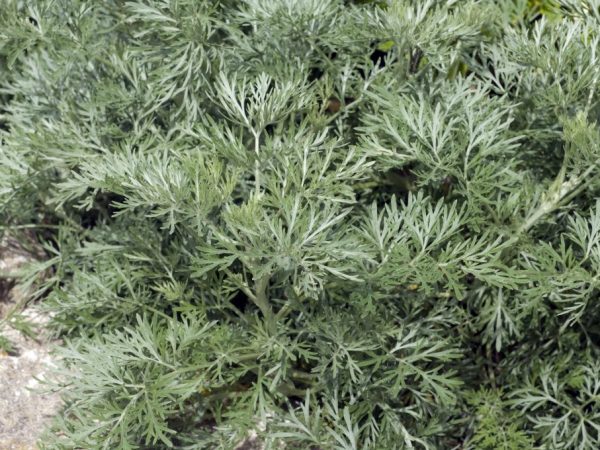
Wormwood is used in the production of alcoholic beverages
Different varieties of wormwood are used not only for medicinal purposes. They are widely used in cooking and the production of alcoholic beverages. The tarragon variety is included in the popular tarragon soda. The famous absinthe drink is made on the basis of this herb. It contains about 15 components: anise, coriander, parsley, mint, calamus, fennel, chamomile, veronica, licorice, lemon balm, etc.
It is believed that thujone, which is part of wormwood, is a drug-containing compound that causes poisoning, hallucinations, and schizophrenia. For a long time, the drink was banned in many European countries; people received prison sentences for its production and storage. But to date, there is no evidence that this particular substance provokes unwanted effects. Since the end of the last century, absinthe again began to be produced and sold. The first bottles of Czech production appeared on the market, then they began to be made in Britain, France and other countries. Thujone content was limited to 35 mg / kg (in the USA - up to 10 mg / kg).
Essential oils and extracts are used in perfumery. Fragrant lemon and tauric wormwood is used for the production of perfume. The strong smell of grass repels insects and parasites. It is used for fleas, bedbugs, lice, mosquitoes, aphids, cockroaches and even mice. They hang a broom in the house, spray the corners or scatter grass around the apartment, try to fumigate the room. The plant does not kill pests, treatment only prevents their appearance in the house.
Wormwood in agriculture
Wormwood is a valuable animal feed. Sheep, horses, goats, camels eat it. In areas where there is little vegetation, grass becomes the only food in winter and early spring. But not all animals perceive wormwood well, it should not be given to rabbits, and cows and geese bypass the thickets themselves. Only in the spring, when there is a lack of vitamins, cattle eat the bitter plant. Because of this, the taste of milk deteriorates, it smells bad.
In beekeeping, medicinal varieties are used to treat certain insect diseases. For example, the plant helps to kill small mites that inhabit the hive. Blossoming wormwood is also included in fumigation mixes during honey harvest.
For many people, wormwood is a common weed, like quinoa, which is difficult to control in the fields. But the roots of this plant strengthen the sandy shores. If grass settles on wastelands, it displaces other vegetation. It often grows in old landfills or quarries, contributing to their reclamation.
Recently, decorative varieties have become popular, which decorate flower beds and alpine slides. The color of any wormwood is dim, but it has cut silvery leaves, in the garden the plant looks original. Planting and caring for such a flower is simple.
Conclusion
The herbaceous wormwood plant is divided into many varieties. It is widespread and grows in poor soils. The herb has medicinal properties, but it should only be used after consulting a doctor. People have been using the plant for a long time in a variety of fields.

